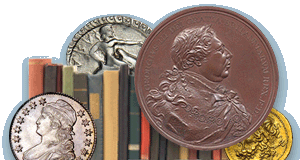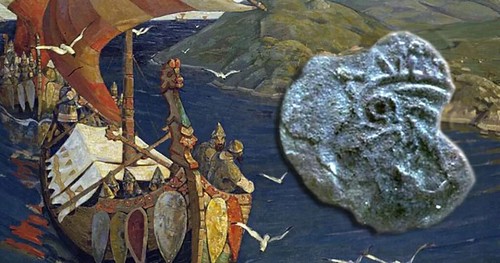
PREV ARTICLE
NEXT ARTICLE
FULL ISSUE
PREV FULL ISSUE
LOOSE CHANGE: JUNE 1, 2025Here are some additional items in the media this week that may be of interest. -Editor World Coin News recently published an interview with Perth Mint coin designer Jennifer McKenna. Here's an excerpt - see the complete article online. -Editor For over a decade, coin designer Jennifer McKenna has crafted creative and beautifully designed coins for The Perth Mint. Although McKenna stays busy creating new designs—including her latest creation, a new interpretation of the famed "Australian Brumby" series—the designer generously answered questions for World Coin News about her start in the industry, her dream coin, and much more. WCN: What is your process like when designing a coin? Are there specific details that are needed? JM: My process starts off with a mixture of research and rough sketches. I try to figure out what works and what doesn't. You might say, I'm digging for ideas until I hit gold! As for the specific details, it's crucial to know what size the coin is going to be. The larger the coin, the more details I get to squeeze in. WCN: What is it like to work for The Perth Mint? How long have you worked there? JM: I have worked at The Perth Mint for almost 12 years now, a full lunar cycle! This is one way of measuring time here because of the ongoing popularity of our Lunar coin series, which features the 12 animals of the Lunar zodiac. My favorite part of the job is working with my team of designers. We all have our different styles and personalities, but we manage to learn from each other and grow as creative professionals.
To read the complete article, see:
Charles Morgan of CoinWeek published an article on reasons for collecting Lincoln cents, now that the denomination is being discontinued. Here's an excerpt - see the complete article online. -Editor For Americans who grew up with memories of spending pennies on gumballs and baseball cards or saving them up in jars, seeing the cent go may trigger an emotional reaction. One might not feel it right away, but nostalgia is a powerful force that drives collectible markets. This emotional connection prompts people to seek items tied to their past, which is why analog media like vinyl and videogame cartridges have seen a resurgence in interest in recent years. The penny will likely trigger a similar nostalgia, just as in 1857 when the Mint discontinued production of the large cent in favor of a smaller version similar to the type we use today. Holding old money is like holding history in your hands, say some in the coin-collecting industry. In this way, coins serve as totems for our past selves and our memories. It might not be obvious now, but there will come a point when seeing a penny is an unusual circumstance. When that happens, those memories will come racing back! Such a resurgence in collecting is definitely possible. When the large cent disappeared after 1857, people noticed and began collecting them. But I fear that today so few people are using coins regularly that fewer will notice that the cent is gone. But the collecting hobby is strong today and many may shift their focus to the disappearing cents. I was a young collector back in 1974 when there was talk of switching cents to aluminum. I rushed out to coin shows and bought a number of the dates/mintmarks I needed to fill out my Whitman Lincoln Cent folder, and also bought uncirculated rolls of early 1970s cents as a potential investment. So did everyone else and I didn't get rich. But change and the resulting publicity do kickstart collector interest. So stay tuned - time will tell how this plays out. -Editor
To read the complete article, see:
Don Cleveland passed along this article about the Maine Penny, a topic we've discussed before. Thanks. See the earlier articles linked below for more information. -Editor The Maine Penny was discovered on 18 of August 1957 by an amateur archaeologist by the name of Guy Mellgren. Mellgren found the coin at the Goddard prehistoric archaeological site, which contained the remains of an old Native American settlement, at Naskeag Point, Brooklin, Maine. It was only about 20 years later, however, that the significance of the coin was revealed. In 1974, the Maine Penny, along with 20,000 (or 30,000) other artifacts discovered at the Goddard archaeological site were donated to the Maine State Museum. Initially, the Maine Penny was identified as an English penny from the 12th century, perhaps brought to Maine by English colonists. In 1978, the artifact was examined by experts from London, who speculated that the coin might have been Norse. Subsequently, an expert on Norse coins from the University of Oslo, Kolbjorn Skaare, confirmed that the Maine Penny was indeed a genuine coin from the Norse world. Furthermore, it was established that the coin was struck sometime between 1065 and 1080 during the reign of King Olaf III. The occupation of the Goddard site, however, has been dated to between 1180 and 1235. Nevertheless, the type of coin struck by Olaf III was circulating widely during the 12th and 13th centuries, thus placing the Maine Penny within the circulation period of such coins.
To read the complete article, see:
To read the earlier E-Sylum articles, see:
Bibliophiles beware - reading books can be dangerous. -Editor Traumatic injuries are common, resulting from war, natural disasters, workplace mishaps, accidents, or sports. But severe bodily damage occurring in a library? In 1359, the famous Italian poet, humanist, and philosopher from Arezzo, Francesco Petrarch (1304–1374), was reading a book in his library written by one of his admired Roman scholars, Cicero. The book was huge and heavy and slipped from his hands, damaging his leg. He was not treated properly, and after a year of pain and infection, was near amputation. In letters to friends, he described his suffering and ongoing attempts to not obey his physicians' misleading recommendations. He also asked why his "mentor," Cicero, was punishing him.
To read the complete article, see:
Wayne Homren, Editor The Numismatic Bibliomania Society is a non-profit organization promoting numismatic literature. See our web site at coinbooks.org. To submit items for publication in The E-Sylum, write to the Editor at this address: whomren@gmail.com To subscribe go to: Subscribe All Rights Reserved. NBS Home Page Contact the NBS webmaster 
|


